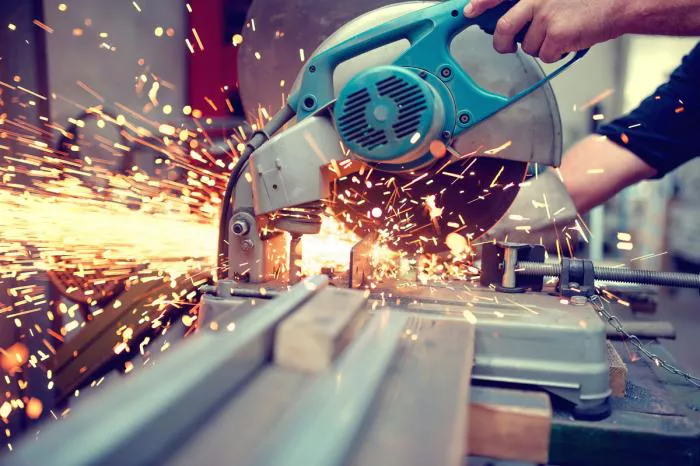Circular saws are versatile power tools designed for making straight cuts in various materials. These tools feature a toothed blade that rotates at high speeds to cut through workpieces. The market offers different types of circular saws, each optimized for specific materials and cutting applications.
The fundamental components of a circular saw include the motor, blade guard, base plate, and handle. Modern versions often incorporate safety features and dust collection systems. When considering whether a metal-cutting circular saw can handle wood, we must examine several technical factors.
Metal vs Wood Cutting Blades
The primary difference between metal and wood cutting circular saws lies in their blade design. Metal cutting blades typically feature more teeth with a specialized tooth geometry. These blades are made from harder materials like carbide-tipped steel or abrasive compounds.
Wood cutting blades generally have fewer teeth with larger gullets (the spaces between teeth). This design allows for efficient chip removal when cutting softer materials. The tooth geometry is optimized for ripping or crosscutting wood fibers.
Blade manufacturers often coat metal-cutting blades with special treatments to reduce heat buildup. Some premium blades use cobalt alloys or diamond grit for enhanced durability when cutting hard metals.
Technical Considerations for Cutting Wood with Metal Blades
While possible, cutting wood with a metal blade presents several technical challenges. The first concern is cutting efficiency. Metal blades cut slower in wood because their tooth design isn’t optimized for wood fibers. This can lead to excessive heat buildup and premature blade wear.
Safety becomes another consideration. Metal blades may produce more kickback when used on wood because the cutting action differs. The saw’s motor might also overheat if pushed beyond its designed capacity for extended periods.
Cut quality typically suffers when using metal blades on wood. Users often notice more tear-out and rougher edges compared to proper wood blades. The finish won’t be as clean, requiring additional sanding or planing.
Motor Power and Speed Differences
Metal cutting circular saws often operate at lower RPMs than their wood-cutting counterparts. This reduced speed helps prevent overheating when cutting metal. However, it can cause burning when cutting wood, especially denser species.
The power delivery also differs. Metal saws provide consistent torque at lower speeds, while wood saws are designed for higher speed operation. Using a metal saw for wood may strain the motor if the blade binds in the cut.
Some modern metal cutting saws feature variable speed controls. These models offer more flexibility but still shouldn’t be considered ideal for regular woodworking tasks.
Blade Longevity Concerns
Using a metal blade for wood cutting accelerates wear in several ways. The blade’s specialized tooth geometry becomes less effective, causing more friction. This friction generates heat that can damage the blade’s temper or brazing.
Pitch buildup presents another problem. Wood resins can accumulate on metal blades, reducing cutting efficiency. This requires more frequent cleaning compared to using proper wood blades.
The cost-effectiveness becomes questionable. Metal blades are generally more expensive than wood blades, making their premature wear an expensive proposition for regular woodworking.
Safety Implications
Safety should always be the primary concern when using power tools. Mixing blade types with unintended materials increases several risks:
Kickback potential rises when using metal blades on wood. The different cutting action can cause the saw to react unpredictably if the blade binds.
Dust production differs significantly. Metal saws may not have adequate dust collection for wood particles, creating respiratory hazards.
Noise levels often increase when using improper blades. The less efficient cutting action generates more vibration and sound.
Proper Alternatives and Solutions
For occasional wood cutting with a metal saw, consider these approaches:
Use a bimetal blade designed for both materials. These compromise blades work reasonably well for mixed applications.
Reduce cutting depth to minimize strain on the motor and blade. Make multiple shallow passes instead of one deep cut.
Clean the blade frequently to prevent pitch buildup. Special blade cleaners help maintain cutting efficiency.
For regular woodworking, investing in a proper wood-cutting circular saw remains the best solution. The performance and safety benefits justify having dedicated tools.
Conclusion
While technically possible to cut wood with a metal circular saw, this practice comes with significant limitations and risks. The differences in blade design, motor characteristics, and cutting mechanics make metal saws suboptimal for woodworking applications. Occasional use with proper precautions may be acceptable, but professionals and serious DIYers should use purpose-built tools for each material. Understanding these tool limitations helps users work more efficiently and safely while extending the life of their equipment.
Relate topics:
- What Sizes Do Circular Saws Come In
- 5 Best Milwaukee Circular Saw
- The View Of The dewalt circular saw

